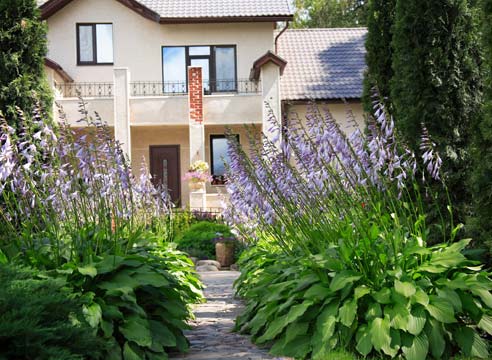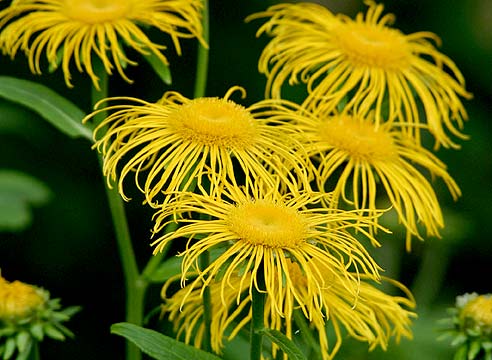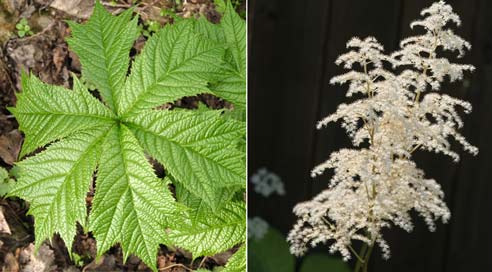Large perennials for solitary landing
"Architectural" plants are always attaching to themselves. In fact, these are ready-made live sculptures created by nature. But the requirements for them are quite high. They must have a graphic silhouette and a single appearance during the season, be resistant to diseases, pests and all weather adversities. And if among the woods it is easy to choose a candidate for a major role, then with the selection of solitator or the dominant group of herbaceous people will have to be tinker. We propose to pay close attention to the largest perennials.
A place under the sun
In open areas, big looks very harmonious hosti. . The thick foliage of the giant sizes visually makes the plant still prompt and more lure. Often, individual large-scale hosts are planted on the lawn, in the foreground of the open area, like decorating the input space. For single landings, as a rule, varieties, tolerant sun are used. In the blue gamma leading " Big Daddy."And" Big Mama.", Golden-Golden -" Sum and Substance."And" Beauty Substance.". Other sports (new form of a plant resulting from mutation) from" Sum and Substance.", eg, " Lady Isobel Barnett." or " Sum It Up.", no less beautiful.

The authors of new varieties often do not know what kind of sizes their hosts with age will be achieved. All new record holders appear: for example, leaf " Xanadu Empress Wu."On the fifth-sixth year, it can reach a meter in length. Of course, you can plant large hosts and groups, but the second plant immediately levels the entire effect of sculpture when landing solo.
And alone, and groups on the bright sun and in the shade good blooming blossoming telecia is beautiful (Telekia Speciosa.). A powerful splashing bush can reach a height of about 1.5 m. Large yellow inflorescences - "chamomile" - cover it almost entirely within a month in the summer of summer. The blurred baskets need to trim, since the plant is abundantly sowing. Strong heart-shaped leaves reaching 60 cm in length are often closed with adjacent plants.

Shadow Sector
From the end of the last century, the shadow corners of our gardens decorate rogersi (Rodgersia.) - Plants with large dissected leaves. In half and with good drainage extraordinarily effect rogers Perista (R. Pinnata.) "Chocolate Wing.s "With chocolate-brown leaves on long (up to 80 cm) stuffing. As the foliage grows, it is bronze, and by the middle of the summer over it rises a half-one-meter pattern with a white blizzard up to 30 cm long. no less beautiful Compact Rogers" Die Schone", wide blades of her bronze leaves are very texture. At the variety" FireWorks."The edges of the leaves are slightly reddish, and in combination with gentle pink flowers are very elegant. Red-brownish varieties rogers Podophilleova (R. Podophylla) "Braunlaub."And" Rotlaub."The eye does not differ at all from each other. Probably, you need to look for ten differences in botanical subtleties or shades of flowers. But who is not at all similar to other species, so it is roger cavillation (R. Aesculifolia.) - The name speaks for itself. Roger buzzinoliste (R. sambucifolia.) A little lower - 70 cm, white-green flowers.

Single in kind
Unusually looks under the crown of trees darmer Shield (peltifylum) (Darmera Peltata.). Like all the surname perennials, it grows well. In the spring until the appearance of the leaves against the backdrop of a naked land is gorgeous, her pink-red spherical flowers on high (50 cm) bloomon. In the summer of Darmer attracts attention with juicy round leaves-shields with a laid edge on high (75-85 cm) stuffs. In this case, individual leaves reaches 40 cm in diameter. And in the autumn they are painted in red-orange tones. Very beautiful Peltifylum and in coastal compositions. It can be damaged by return freezers, but quickly restores the form. It grows well on loose, wet and enough fertile soils.
Another only representative of a kind - astilbojdes plate (Astilboides Tabularis.). Sometimes in garden centers, it is found under the old name - Roger, plate. The plants are truly a huge rigid round leaves up to 60 cm in diameter, similar to Darmera leaves, but absolutely flat, without a funnel at the pot. This giant is beautiful in all stages of development, and especially in June - early July, when a creamy-white sweepete appears on a high bloomon, reminding an astilb. On the moistened soil in the shady spot, a small seedling in two years will turn into a hero, covering the square meter of the Sadovaya Square.
